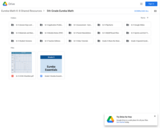
Eureka math
- Subject:
- Mathematics
- Material Type:
- Activity/Lab
- Assessment
- Author:
- Liberty Public Schools
- Date Added:
- 04/07/2021

Eureka math
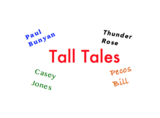
This lesson uses tall tale read alouds to reinforce the common elements, or text structure, of tall tales. As the text is read aloud, students examine the elements of the book that are characteristic of tall tales. Then using what they've learned, they write and perform tall tales of their own.
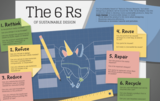
This lesson is designed as a supplement or extension to the 5th grade Smithsonian Science for the Classroom module titled How Can We Provide Freshwater to Those in Need? This lesson can be taught as an extension following Lesson 2: WATER FOOTPRINT. This lesson is designed to facilitate student learning about sustainable design and green chemistry principles.

This lesson is designed as a supplement or extension to the 5th grade Smithsonian Science for the Classroom module titled How Can We Identify Materials Based on Their Properties? This lesson can be taught as an extension following Lesson 3: PLANT PRODUCTS or Lesson 6: CHEMISTS MAKE SOLUTIONS.This lesson is designed to facilitate student learning about sustainable design and green chemistry principles.

Help your students explore the Oregon Statewide Assessment System Grade 5 Science Sample Test in this slideshow with imbedded videos. The OSAS page has been updated, but all of the basics are still there. Each question is broken down in its own section - "Session 1 The Beach House." Before doing the question, we look at the objective and task by thinking like a scientist using CCC & SEP. Then we explore how to navigate the question. We break down the key elements of the question relating to the task. Students work the problem on their own. "Let's check out the answers" goes over strategies used to solve the task and the reasoning behind the answers.
The video was made in the spring of 2021 to support distance learning.

5th grade learning window Science
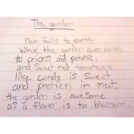
Esta es una lección para el aprendizaje a distancia que los alumnos pueden completar en casa.Los estudiantes evaluarán el impacto del lenguaje sensorial y el lenguaje figurativo en la poesía, y determinarán el significado general del poema utilizando el espacio al aire libre como contexto para la escritura.Esta actividad fue creada por Out Teach (out-teach.org), una organización sin fines de lucro que proporciona aprendizaje experiencial al aire libre, con el objetivo de transformar la educación de las ciencias para los estudiantes en comunidades más desatendidas.

Esta es una lección para el aprendizaje a distancia que los alumnos pueden completar en casa.Los estudiantes explorarán al aire libre en busca de ejemplos de transferencia de calor a través de la conducción, la convección y la radiación.Esta actividad fue creada por Out Teach (out-teach.org), una organización sin fines de lucro que proporciona aprendizaje experiencial al aire libre, con el objetivo de transformar la educación de las ciencias para los estudiantes en comunidades más desatendidas.
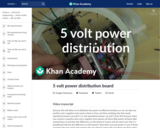
In this video we hack apart a bread board to create a 5 volt power distribution strip. The 5 volts comes from the center pin in the motor controller and the negative or ground comes from the ground pin on the motor controller. Created by Karl Wendt.
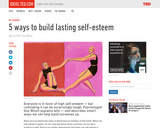
5 simple steps for helping to cultivate good self-esteem, including a great TED talk by Guy Winch.
"TED Videos are not officially licensed with any kind of open licensing. However, TED allows the users to freely view and download the videos without restraint. The website is provided as a public service to promote the spread of good ideas."

Family facing 6th Grade math unit focusing on area and surface area.

In this unit, students learn to find areas of polygons by decomposing, rearranging, and composing shapes. They learn to understand and use the terms “base” and “height,” and find areas of parallelograms and triangles. Students approximate areas of non-polygonal regions by polygonal regions. They represent polyhedra with nets and find their surface areas.

Student facing 6th Grade math unit focusing on area and surface area.

How does a one-way mirror work? Though most everyone knows that one-way mirrors exist, having students model how they work turns out to be a very effective way to develop their thinking about how visible light travels and how we see images. Initial student models reveal a wide variety of ideas and explanations that motivate the unit investigations that help students figure out what is going on and lead them to a deeper understanding of the world around them.
As the first unit in the OpenSciEd program, during the course of this unit, students also develop the foundation for classroom norms for collaboration that will be important across the whole program.
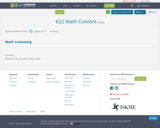
Elaborate why we need to learn math.
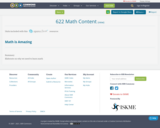
Elaborate on why we need to learn math
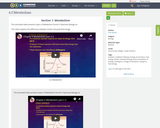
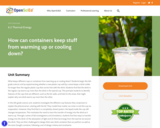
This unit on thermal energy transfer begins with students testing whether a new plastic cup sold by a store keeps a drink colder for longer than the regular plastic cup that comes free with the drink.
Through a series of lab investigations and simulations, students find two ways to transfer energy into the drink: (1) the absorption of light and (2) thermal energy from the warmer air around the drink. They are then challenged to design their own drink container that can perform as well as the store-bought container, following a set of design criteria and constraints.

Unit Summary
This unit on thermal energy transfer begins with students testing whether a new plastic cup sold by a store keeps a drink colder for longer compared to the regular plastic cup that comes free with the drink. Students find that the drink in the regular cup warms up more than the drink in the special cup. This prompts students to identify features of the cups that are different, such as the lid, walls, and hole for the straw, that might explain why one drink warms up more than the other.
Students investigate the different cup features they conjecture are important to explaining the phenomenon, starting with the lid. They model how matter can enter or exit the cup via evaporation However, they find that in a completely closed system, the liquid inside the cup still changes temperature. This motivates the need to trace the transfer of energy into the drink as it warms up. Through a series of lab investigations and simulations, students find that there are two ways to transfer energy into the drink: (1) the absorption of light and (2) thermal energy from the warmer air around the drink. They are then challenged to design their own drink container that can perform as well as the store-bought container, following a set of design criteria and constraints.
This unit builds toward the following NGSS Performance Expectations (PEs) as described in the OpenSciEd Scope & Sequence: MS-PS1-4*, MS-PS3-3, MS-PS3-4, MS-PS3-5, MS-PS4-2*, MS-ETS1-4. The OpenSciEd units are designed for hands-on learning and therefore materials are necessary to teach the unit. These materials can be purchased as science kits or assembled using the kit material list.
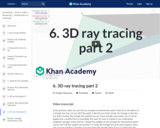
Now we just need to determine whether our intersection point is inside or outside the triangle.